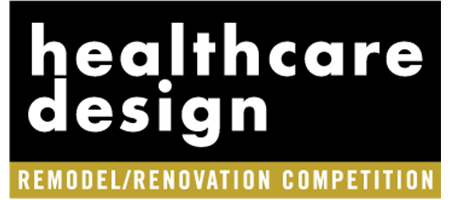 The Looking Back column is part of Healthcare Design’s 25th anniversary coverage in 2025. If you’re interested in contributing, contact Editor-in-chief Anne DiNardo at [email protected].
The Looking Back column is part of Healthcare Design’s 25th anniversary coverage in 2025. If you’re interested in contributing, contact Editor-in-chief Anne DiNardo at [email protected].
Looking back
Over the past 25 years, the healthcare design industry has experienced significant changes in how project teams are created, organized, and selected.
What once were small, siloed teams are now multidisciplinary groups comprising a range of professionals, including architects, interior designers, engineers, construction professionals, and operational consultants, working together to guide and impact facility projects.
This shift toward a more collaborative design approach has made a big impact—leading to better design solutions that are more responsive to the needs of all users of health and wellness facilities. Here are four important factors that have contributed to the evolution of project team integration and collaboration since 2000.
Healthcare provider systems and consolidation

Gary Vance (Headshot credit: Vance Consulting)
Two decades ago, healthcare in the United States comprised mainly of individual hospitals and related facilities rather than the large systems we have today.
However, this has drastically changed as organizations have grown larger, stand-alone health providers have coalesced into systems, and, unfortunately, smaller healthcare providers have ceased operations.
As part of this consolidation, operational standardization and efficiency have evolved to become critically important during the early phases of project development. As such, the specialty of operational consulting has developed, contributing to improved project team integration and collaboration.
The inclusion of operational thought leadership was the missing element to comprehensive planning and design during the early phase of projects.
Building a knowledge network
With the development of email, internet, and communication methods, the available knowledge of the planning and design network has exploded. Important professional knowledge groups such as the American College of Healthcare Architects (ACHA) also provide a platform for the sharing of knowledge, connectivity, and collaboration.
In addition, the creation of board-certified healthcare architects provided the known expertise level and pipeline for architects to connect and collaborate for projects. Within the development of a connected knowledge network, it’s become possible for healthcare design professionals to search, identify, and contact qualified professionals to join project teams.
Engineering and construction professionals join the network
This partnering and collaborative approach of the planning and design network produced improved health and wellness outcomes, and engineering professionals and contractors took notice.
This shift led to these essential professionals joining project teams during the earliest planning and design phase, which allowed planners and architects to test and learn the viability and initial cost for solutions and options in real time. The result is a much improved and efficient project planning and design phase that creates a project that’s viable, within budget, and implementable.
Sharing of knowledge
Decades ago, the conventional thinking among healthcare design professionals was to not share expertise and knowledge in professional circles because others would copy your concepts and designs.
However, over the past several decades, it became important for architecture, engineering, and construction (A/E/C) professionals to be thought leaders and to share their knowledge. Clients understand that thought leadership is a transferable skill to their problems and creative solutions can be achieved by those who lead the industry.
Through these changes, the A/E/C industry has evolved into a strong network of highly dedicated, knowledgeable, and creative partners who can provide the best and most appropriate solutions to clients. It’s exciting to think about what changes the next 25 years will bring to this industry.
Gary Vance is president of Vance Consulting (Indianapolis).












